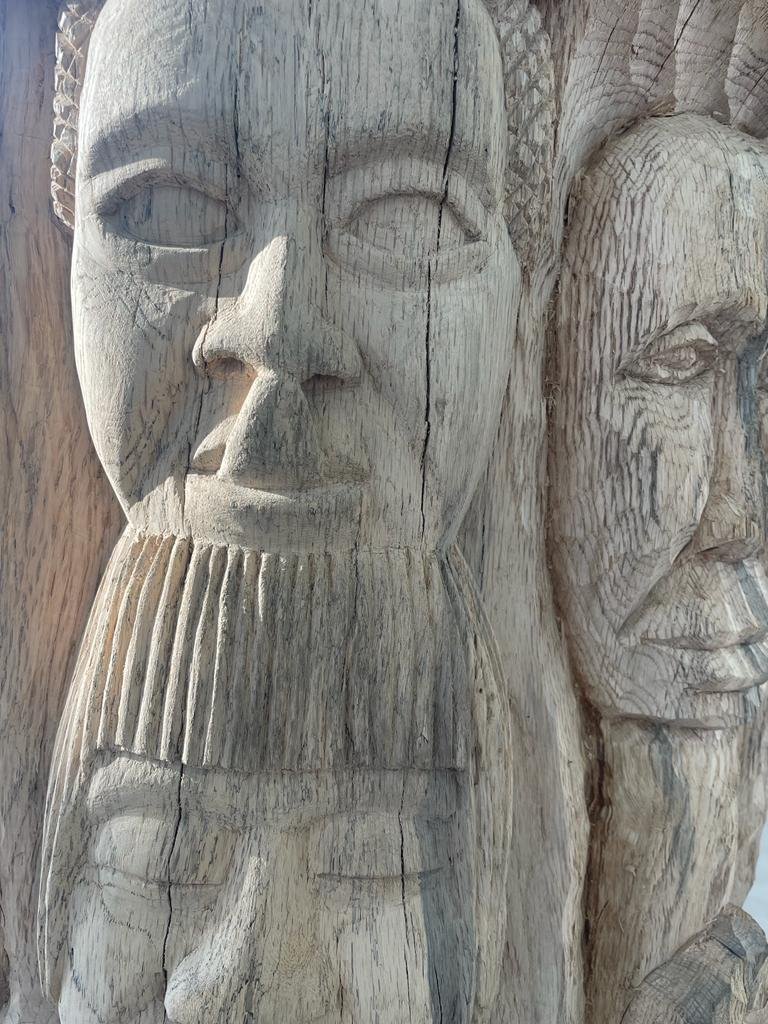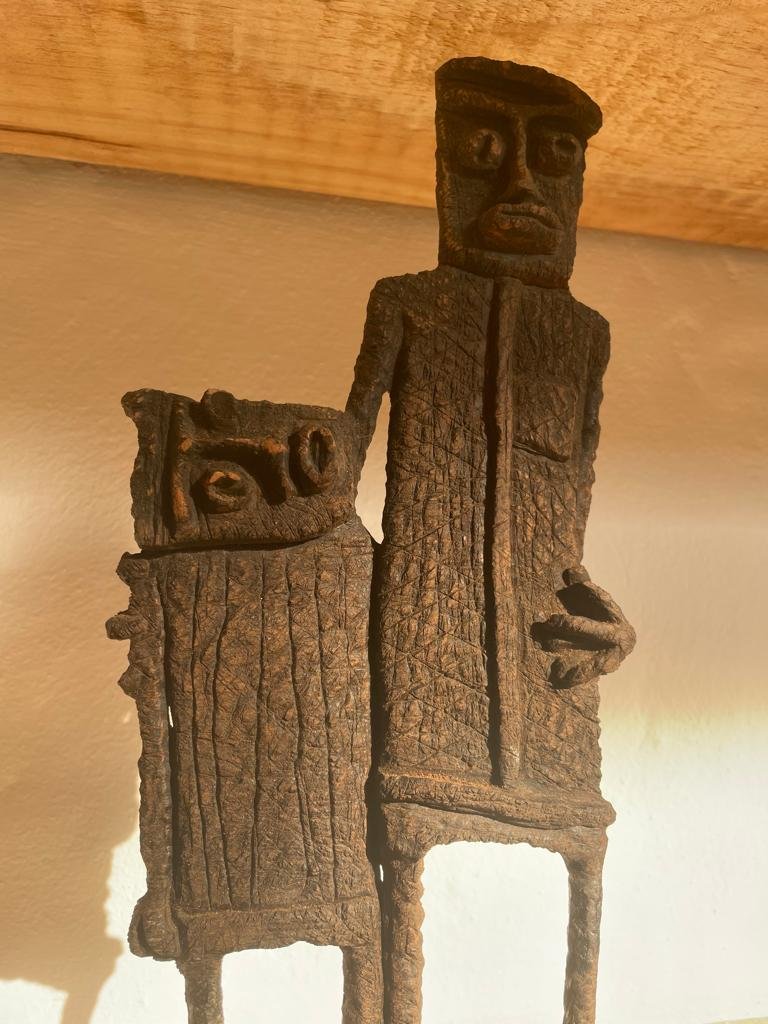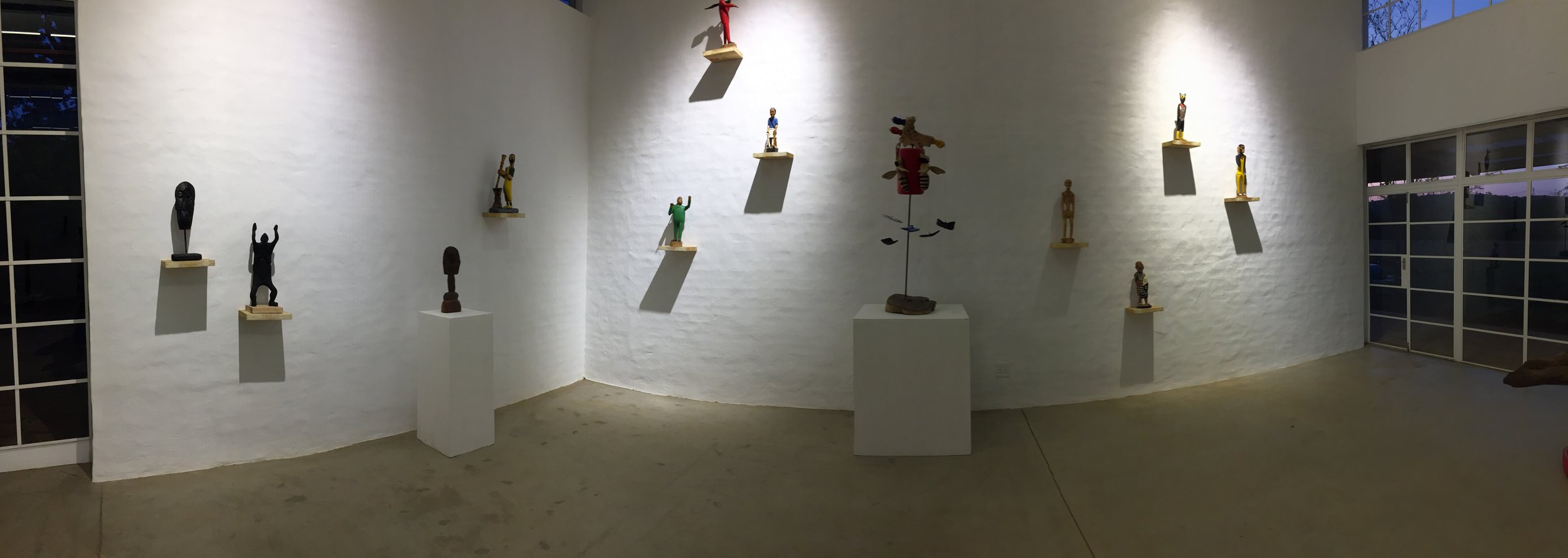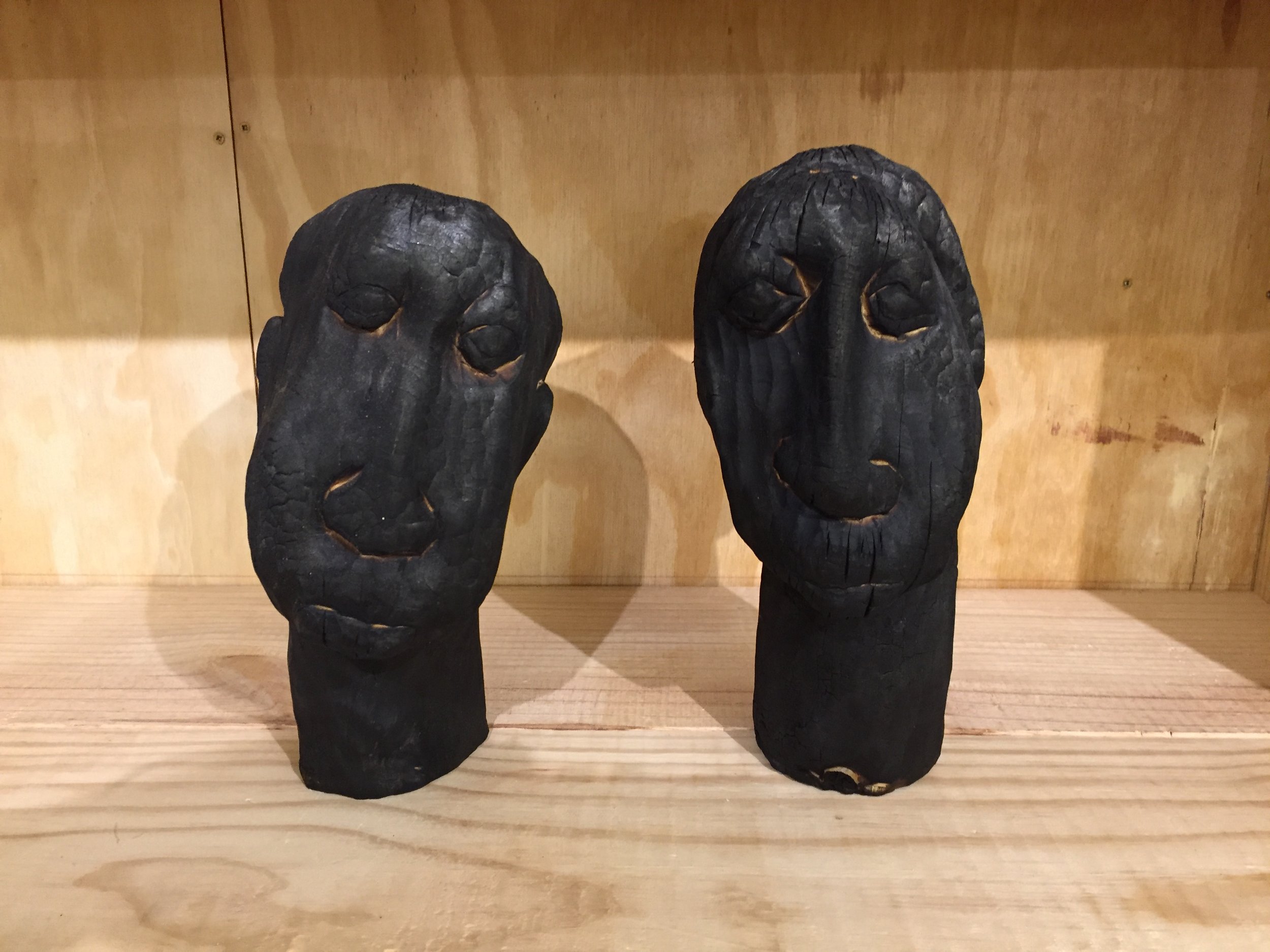Carving X
1 – 16 October 2022
In 2021, the Claire and Edoardo Villa Will Trust granted the Edoardo Villa Extraordinary Award for Sculpture to Jackson Hlungwani, the first of its kind to be awarded to an artist posthumously in acknowledgement of Hlungwani’s significant contribution to South African sculpture.
In addition to the production of a publication on Hlungwani’s work, the award intended to honour the memory of Hlungwani and further the woodcarving tradition by making provision for another sculptor, Collen Maswanganyi, to develop his practice through a four-week residency at NIROX. As part of this award, Maswanganyi proposed a workshop titled Carving X, during which he collaborated with fellow sculptors Richard Chauke, Amorous Maswanganyi, and Ben Tuge. The workshop began on Monday 5 September and ran until 2 October.
During this time, the artists worked together to produce two large-scale works (The Presence of God and Mabyongo / Pfungwa) as well as a series of smaller independent works from a large fallen Oak at NIROX. Many conversations were had during this period. Some focused on the process of carving itself, exploring the different types of wood used, the finish, or the idiosyncrasies involved in, say, painting in acrylic or enamel, or not at all, letting the wood show through. Other conversations focused on the role of writing, the place of artist statements, the context of exhibition, and how to go about pricing and marketing one’s work. This aspect of the workshop led to the collective decision that, while the Centre would take no commission, Carving X should be a selling exhibition, with the Centre enabling communication between the artists and potential buyers.
Showcased alongside pre-existing works, the exhibition explores the role of collaboration, grappling with questions of authorship, individual and collective identity, and the role of community in the making process, while foregrounding a variety of material choices and techniques, from the Maswanganyis’ painted matt, smoothly-sanded figures to the polished, enamel figures of Richard Chauke, and Tuge’s burnt, chisel-finished works in Jacaranda and Oak.



















